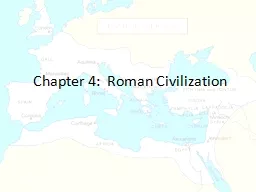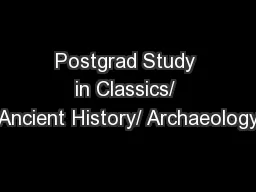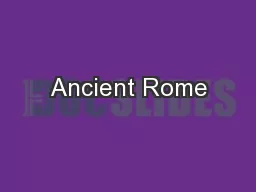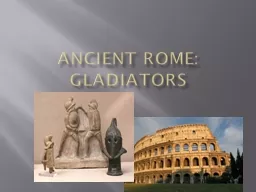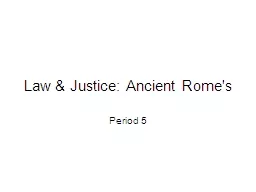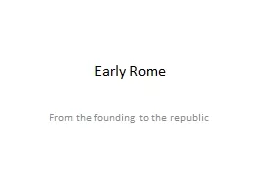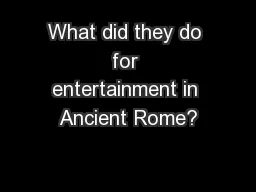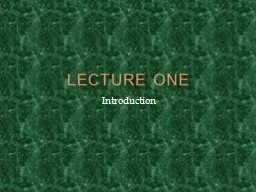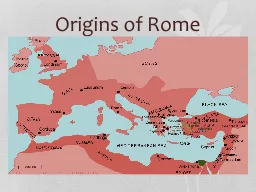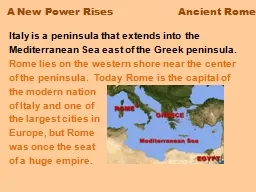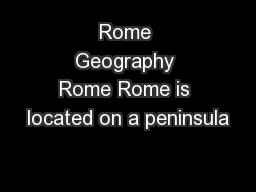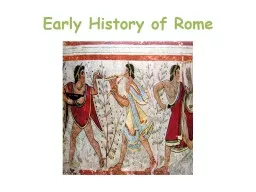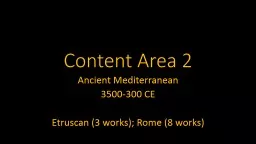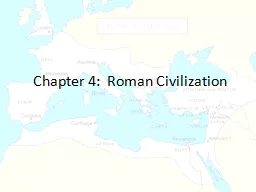PPT-Chapter 4: Ancient Rome Etruscan Influence Architecture Etruscan
Author : ellena-manuel | Published Date : 2019-11-03
Chapter 4 Ancient Rome Etruscan Influence Architecture Etruscan Temples Steps only on one side Deep front porch Enclosed area cella is divided into three rooms
Presentation Embed Code
Download Presentation
Download Presentation The PPT/PDF document "Chapter 4: Ancient Rome Etruscan Influ..." is the property of its rightful owner. Permission is granted to download and print the materials on this website for personal, non-commercial use only, and to display it on your personal computer provided you do not modify the materials and that you retain all copyright notices contained in the materials. By downloading content from our website, you accept the terms of this agreement.
Chapter 4: Ancient Rome Etruscan Influence Architecture Etruscan: Transcript
Chapter 4 Ancient Rome Etruscan Influence Architecture Etruscan Temples Steps only on one side Deep front porch Enclosed area cella is divided into three rooms Etruscan Influence Architecture. Geography The people who settled Rome chose a geographic location that was good for defense travel and trade Economics To survive Roman farmers relied on discipline and hard work The Beginnings of Rome ESSENTIAL QUESTION What is the early history of A Short Guide. On offer at Warwick. MA by Research. 1 year full-time; 2 years part-time. Variant 1: 40,000-word dissertation . Variant 2: 25,000-word dissertation + two 5,000-word essays + ancient language training. The Rise and Fall of an Empire. Critical Intro:. List 5 -10 things you know about Classical Rome.. 2. How was geographic location important. to economic, social, and political development of ancient Rome?. Facts about Gladiators. Roman gladiators were trained in mortal . combat,. a . form of . public entertainment . in ancient Rome. .. Roman . gladiators were usually convicted. criminals, slaves, or prisoners of war. Period 5. . The Police. BEAT HIS ASS MOTHA F-ER. - There was no professional police force in Rome which is often recognized as one of the reasons that the Roman republic collapsed. From the founding to the republic. The Founding. Aeneas – . The . Aeneid. . by Virgil, Trojan War around 1220 BC. Romulus and Remus – twin sons of Rhea Silvia and Mars. Rome founded around 750 BC on Palatine Hill. The citizens of ancient Rome were serious about having fun. They gobbled food and guzzled drink. They loved hearing musicians play. But probably nothing was more fun for them – or popular – than spending a savage day at the . Introduction. Grand Tour. Pompeii. Edward Gibbon. The Decline and Fall of the Roman Empire. Signing of the Declaration of Independence. La . Maison. . Carrée. Capitol Building in Washington DC. Arch of Emperor Constantine the Great. Aeneas flees Troy. Barocci. , 1598. Birth of Twins. Numitor. – King of Alba Longa. Amulius. - Brother to the King. Rhea Silvia – Daughter of King . Numitor. Mars, God of War – as himself. Romulus and Remus. Italy is a peninsula that extends into the Mediterranean Sea east of the Greek peninsula. . Rome lies on the western shore near the center of the peninsula. . Today Rome is the capital of the modern nation . Located along the Mediterranean sea. Mediterranean climate. The . Alps and . Appinies. . m. ountain ranges protect Rome from outsiders and made it difficult to travel across the peninsula. Home of Mt. Vesuvius (volcano). . kings ruled Rome from 600 B.C. to 509 BC . Roman aristocrats overthrew the last Etruscan king in 509 BC. Establish a republic. Regal- 753-509 B.C.E. . Rome is ruled by kings. Republic- 510-27 B.C.E. 3500-300 CE . Etruscan (3 works); Rome (8 works). 2. Etruscan Supremacy: 700-509 BCE. Provided link between Greek and Roman Art. KEYWORDS: TERRA-COTTA, TUSCAN COLUMNS, TUMULI. Roman Republican Period: 509-27 BCE . Chapter 4: Ancient Rome Etruscan Influence Architecture Etruscan Temples Steps only on one side. Deep front porch. Enclosed area ( cella ) is divided into three rooms. Etruscan Influence Architecture
Download Document
Here is the link to download the presentation.
"Chapter 4: Ancient Rome Etruscan Influence Architecture Etruscan"The content belongs to its owner. You may download and print it for personal use, without modification, and keep all copyright notices. By downloading, you agree to these terms.
Related Documents

